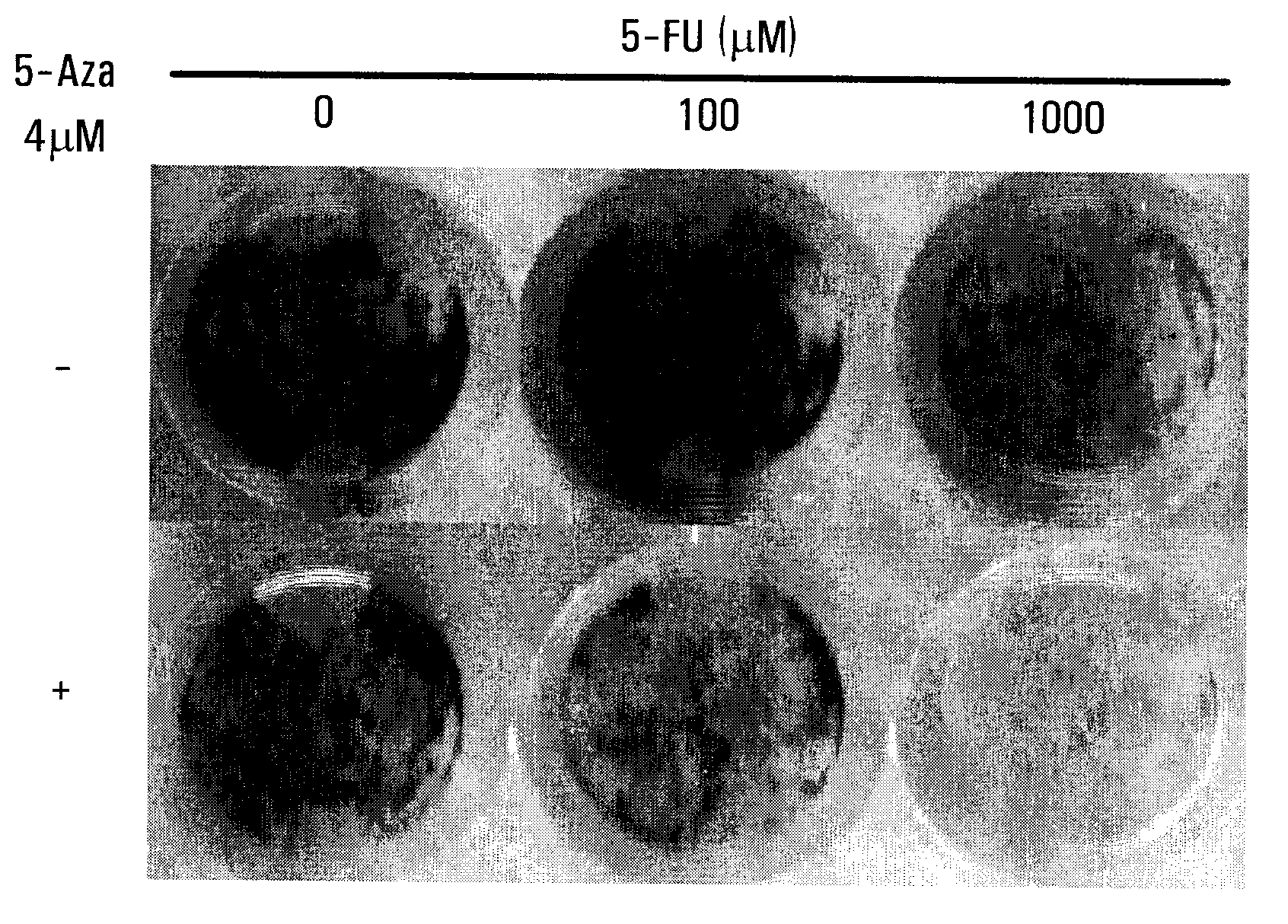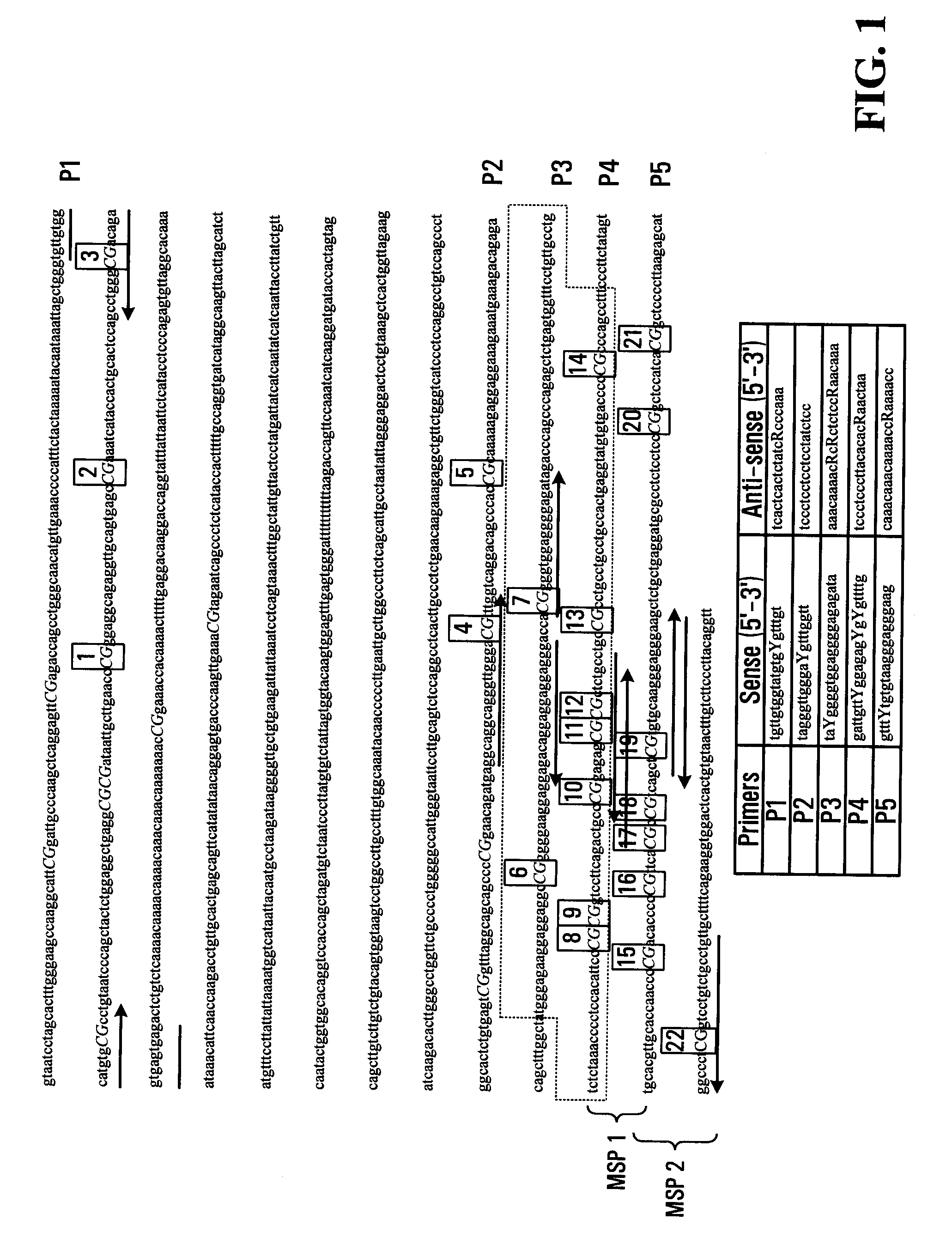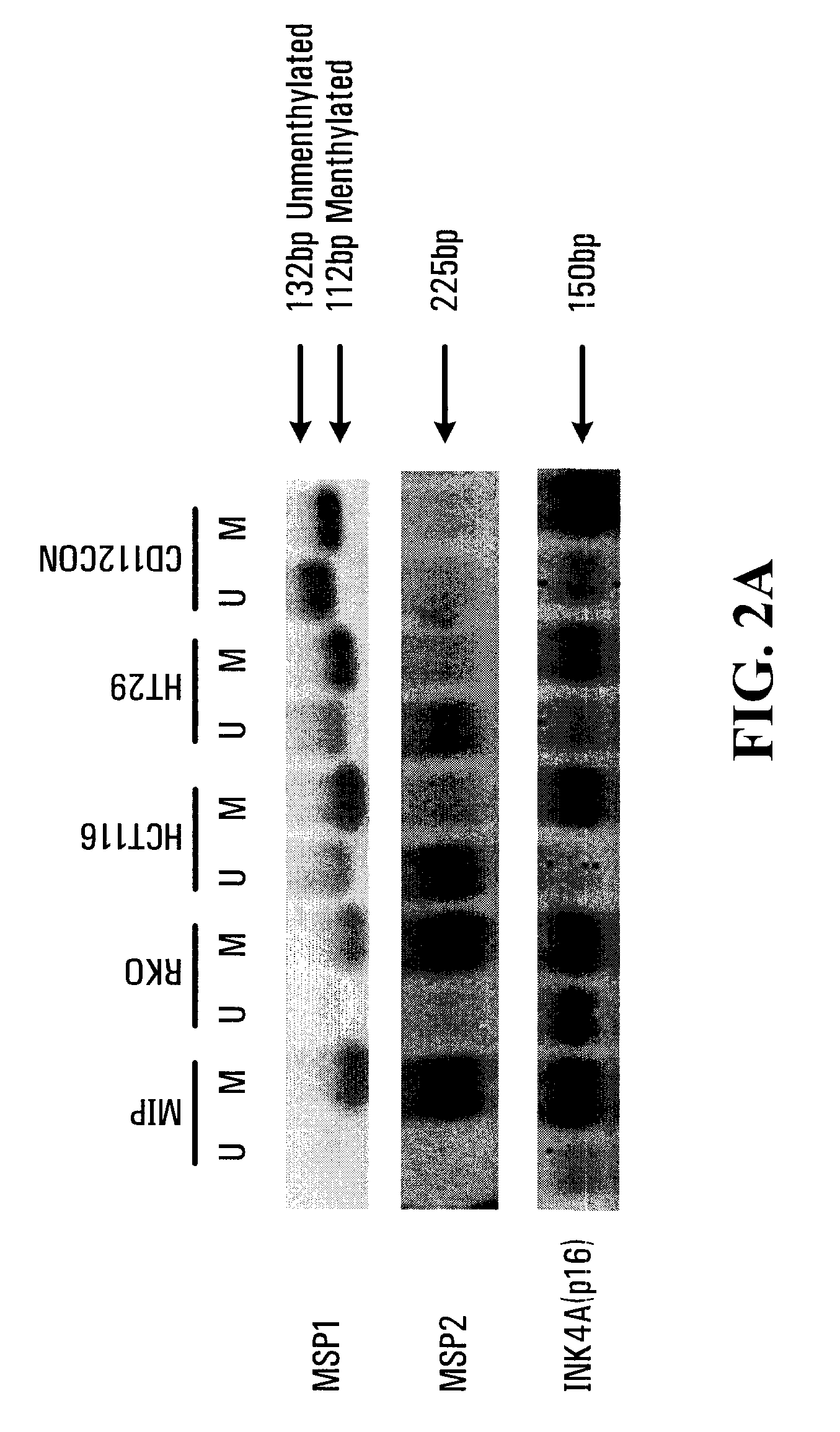Assessing Chemotherapy Resistance of Colorectal Tumors by Determining Sparc Hypermethylation
a colorectal tumor and chemotherapy resistance technology, applied in the field of assessing chemotherapy resistance of colorectal tumors by determining sparc hypermethylation, can solve the problems of sparc hypermethylation, high mortality rate of cancer patients, and reduced efficacy of chemotherapeutic regimens
- Summary
- Abstract
- Description
- Claims
- Application Information
AI Technical Summary
Benefits of technology
Problems solved by technology
Method used
Image
Examples
example 1
[0119]This Example demonstrates the hypermethylation of the SPARC promoter region in colorectal cancer cell lines.
[0120]The methylation status of the SPARC promoter (see FIG. 1) was determined by methylation specific PCR in four CRC cell lines (MIP101, RKO, HT29, and HCT 116) and one normal colon cell line (CCD 112CoN) (FIG. 2a). Hypermethylation was observed in the entire promoter region of MIP 101 and RKO cells flanked by MSP1 and MSP2. In HCT116 and HT29 cells, partial methylation was noted with methylated CpG sites in the MSP1 region, but not in the MSP2 region. The normal colon cell line CCD-112CoN also showed partial methylation, with a methylated MSP1 region and an unmethylated MSP2 region (FIG. 2a). In addition, as a control, the methylation status of the promoter of the INK4A(pl6) gene was also assessed. INK4A(pl6) gene has been well described as hypermethylated in some colon cancers, and was found to be hypermethylation in MIP101 and HCT 116 cells, but only partial methyla...
example 2
[0121]This Example demonstrates that the effects of exposure to a demethylating agent on the methylation status of the SPARC promoter region in colorectal cancer cell lines.
[0122]Exposure to a demethylating agent, 5-Aza (4 μM), for 7 days in vitro resulted in a change in the methylation status in the MSP1 and MSP2 regions of the promoters for both SPARC and INK4A(pl6) in all four CRC cell lines (FIG. 2b). Unmethylated regions were detected after incubation with 5-Aza, especially in those cell lines where there was complete methylation in both MSP regions, such as in MIP101 and RKO cells. Reversal of hypermethylation within the region of the SPARC promoter by 5-Aza was confirmed by ChIP assays (FIG. 2c). In all CRC cell lines, an interaction between the SPARC promoter with Dnmtl (a DNA methyltransferase that catalyzes the transfer of a methyl group to DNA, resulting in DNA methylation) could be detected (FIG. 2c). However, following exposure to 5-Aza, this interaction was no longer o...
example 3
[0123]This Example demonstrates that hypermethylation of the SPARC promoter was more commonly observed in human colon cancers than in the normal colon.
[0124]Methylation specific PCR was used initially to determine the methylation status of DNA isolated from laser-capture microdissected specimens of human colorectal cancers and normal colon. The clinical characteristics of the specimens studied is shown in the following table:
AJCCAge rangeGenderstaging(mean)(M / F)I44-81 (62.5)3 / 2II58-73 (65.5)2 / 0III55-75 (61.7)3 / 0IV——Normal34-68 (54.2)3 / 2
[0125]It was observed that the promoter for SPARC was methylated in 4 of 10 human colon cancers while no methylation was observed in any of the 5 normal colon samples in the regions assessed by MSP1 and MSP2. FIG. 3 shows methylation pattern of the SPARC promoter from primary colorectal cancers and normal colon were assessed by MSP. Methylation of the SPARC promoter was observed in 4 of 10 colon cancers while no methylation was observed in the normal ...
PUM
| Property | Measurement | Unit |
|---|---|---|
| temperature | aaaaa | aaaaa |
| doubling time | aaaaa | aaaaa |
| doubling time | aaaaa | aaaaa |
Abstract
Description
Claims
Application Information
 Login to View More
Login to View More - R&D
- Intellectual Property
- Life Sciences
- Materials
- Tech Scout
- Unparalleled Data Quality
- Higher Quality Content
- 60% Fewer Hallucinations
Browse by: Latest US Patents, China's latest patents, Technical Efficacy Thesaurus, Application Domain, Technology Topic, Popular Technical Reports.
© 2025 PatSnap. All rights reserved.Legal|Privacy policy|Modern Slavery Act Transparency Statement|Sitemap|About US| Contact US: help@patsnap.com



